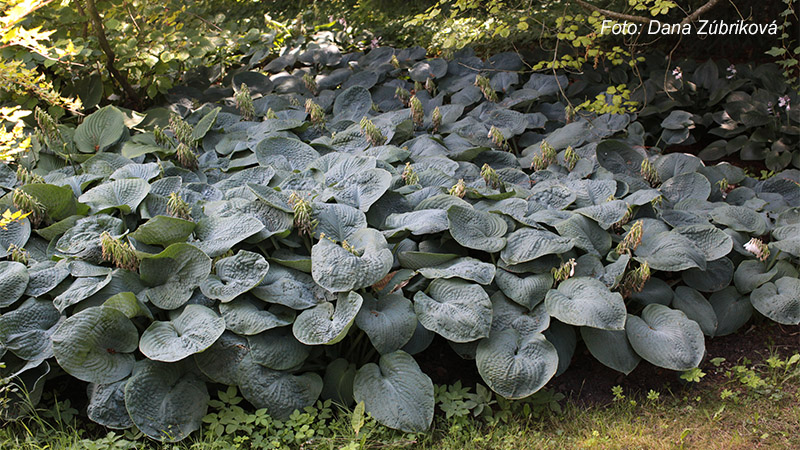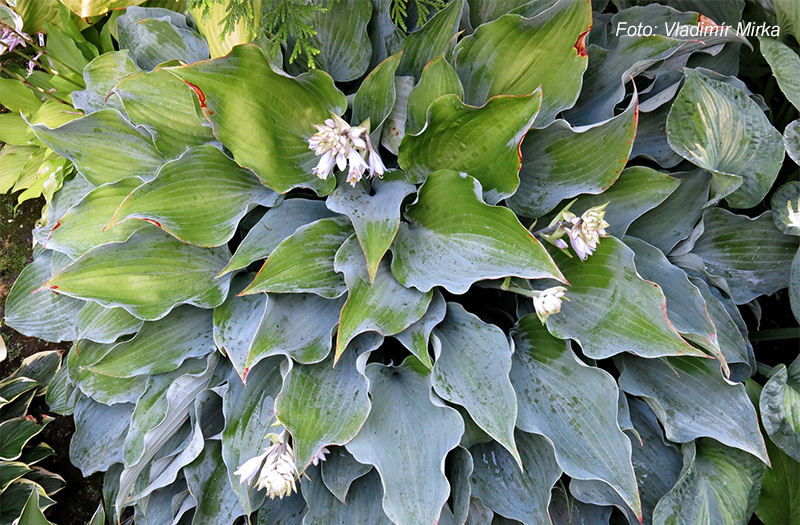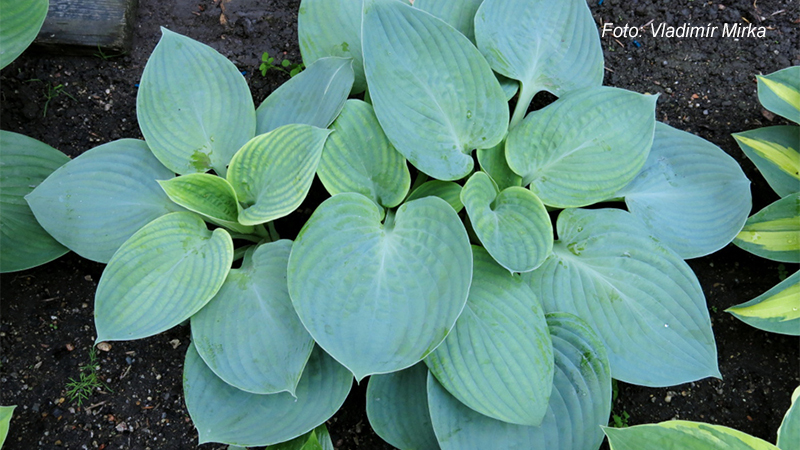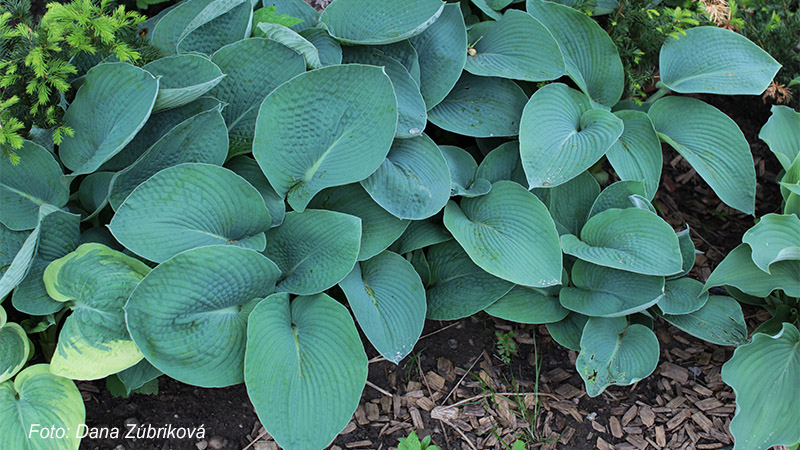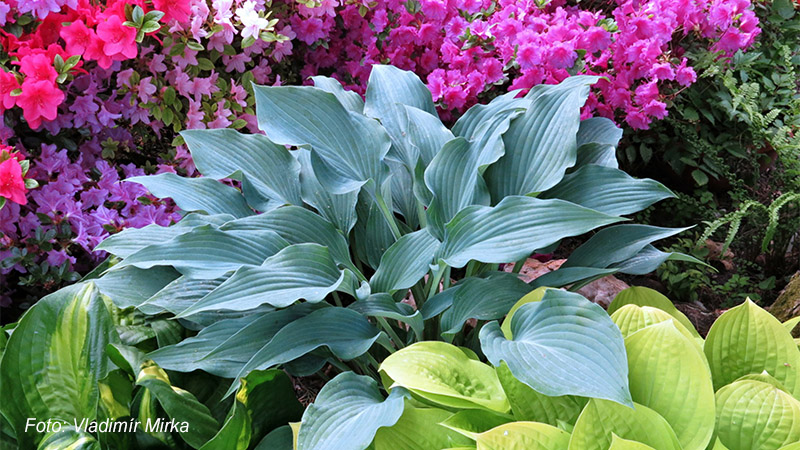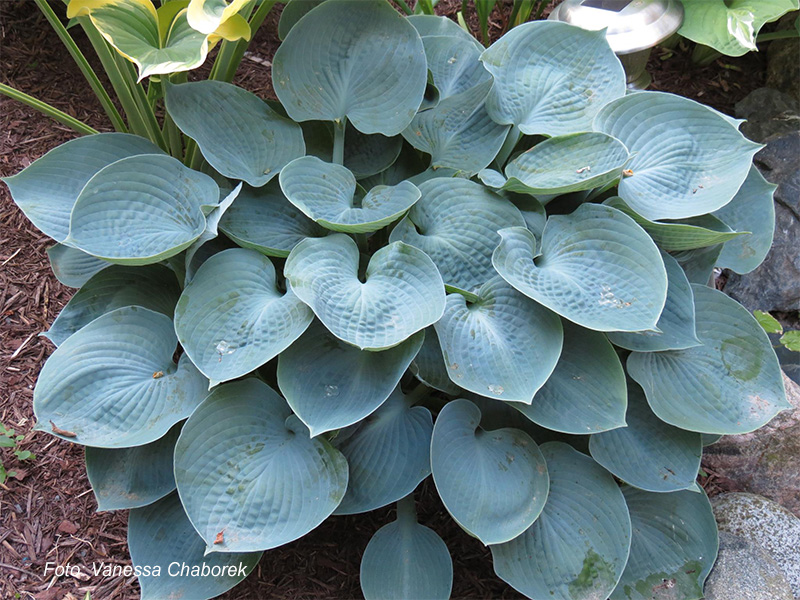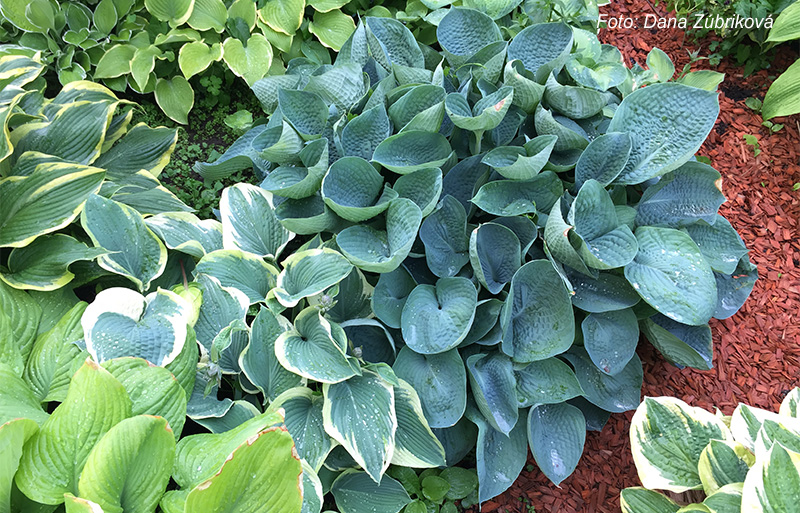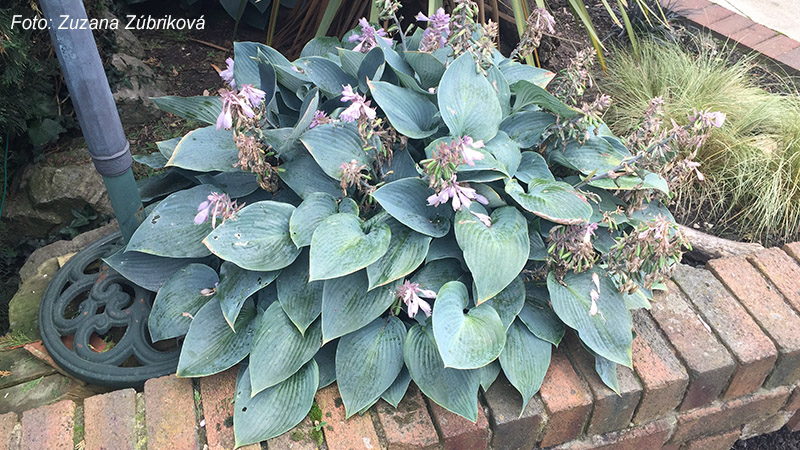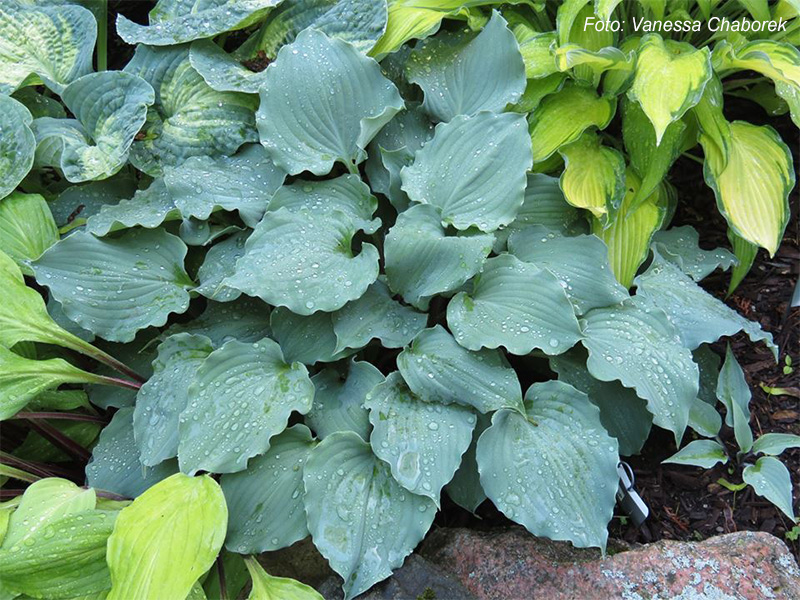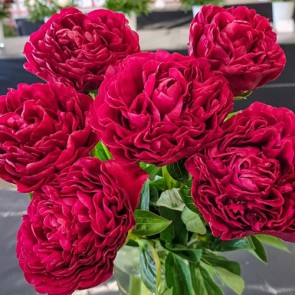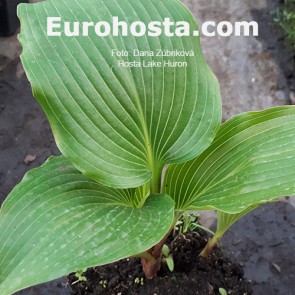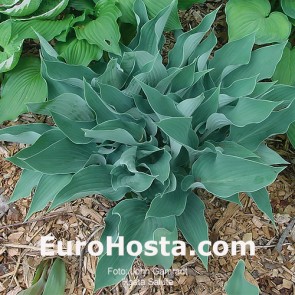Blue Hostas, why are they blue and how to care for them...
Text and Photo: Eurohosta + V. Mirka, March 2019
|
Did you know that blue is the rarest color in the garden? Blue hostas will give your garden a real blue shade. Choose a blue-green, green-blue, blue-gray, dark blue or azure-blue cultivar... Fragrant, or not, small, medium, or a huge one. We all love blue hostas just for their beautiful blue color. Why are they blue and how to care for them?
The blue color is highly prized by gardeners and plant collectors. A blue hosta is a true jewel of every garden. However, not everybody knows that the leaves of the blue hostas are basically dark green and the blue effect is visible only thanks to a layer of wax on their surface. This phenomenon is unique in the plant world since hostas are shade tolerant, and most plants with a blue surface coating, as seen in many cacti, yuccas, agaves, etc., have it as protection against the sun. Most of blue hostas are resistant to slugs, because wax is bitter and slugs and snails do not like it. Some hosta cultivars have a thick wax layer, while in other cultivars it is thinner. The thicker the wax layer, the more intense the blue color that the hosta develops, and the color is also longer lasting. In the direct sun – under the influence of heat, the wax layer degrades and gradually disappears. That is why most blue hostas are green-blue or just dark green from mid-summer until autumn. Try it yourself - slightly wipe the wax layer from the leaf with your finger and the leaf will become green. It is that easy to remove. Blue hostas perform best in temperate climates, with a wet and long spring and cooler summer. In very warm regions, in the south, where the year goes straight from mild winter to hot summer, the blue color lasts for just a short while. Blue hostas generally perform better in somewhat colder climates. In our Central European conditions, blue hostas are brightest from the end of May until the middle of June. Then the blue color slowly disappears. Blue hosta cultivars are shade tolerant plants. The more sun they have, the sooner they lose their wax coating and keep their blue color for a shorter time. Extensive irrigation can increase the duration of their nice blue color. Be careful not to irrigate from above, as water can wash the wax layer down from the leaves - apply water carefully close around the roots if you want to keep your hostas’ wonderful bright blue color as long as possible. Older plants have a thicker wax coating, so that older, well rooted clumps of the hosta are more intensely blue than the young plants of the same cultivar.
The green parts of the leaves are wax-free. The green parts of the leaves are wax-free. This blue hosta was exposed to the full sun for a long time and the protective wax layer on its leaves was burned by sun. Leaves that were in shad, remained blue.
Hosta Skylight (Stegeman, 2001). Thick heart-shaped blue leaves.
Hosta Blue Vision It is not true that there are no beautiful blue cultivars among the older cultivars, or that all of the new blue cultivars are ideally blue. Between the older and the new hosta cultivars we can find plenty of truly beautiful blue types that are worthy of having adding to your garden. Therefore, we did not divide the blue hosta cultivars according to the year of registration but according to color. We offer the following three categories: REALLY BLUE HOSTAS, GREEN-BLUE HOSTAS with a prevalence of blue and BLUE-GREEN HOSTAS with a prevalence of green color. Our division is clearly highly subjective and you do not need to agree with it. Anyone of you can have different experiences in your garden... It is often the case that in certain circumstances and under specific, suitable light conditions, the BLUE-GREEN HOSTA may develop a wonderful blue color - the nicest in the garden! As a rule, such a hosta will hold a beautiful blue color a bit shorter than those from the REALLY BLUE HOSTAS category. Why are my “blue” hostas not blue? (1) Maybe because you grow them in full sun. A bit of sunlight does not injure any cultivar (especially morning sun), but intense afternoon sun quickly melts the wax layer and the blue hostas soon lose their color.
Hosta Venetian Blue (M. Zilis 2003) has blue gleaves, that turns green as the season progress. Wavy margins. REALLY BLUE HOSTAS
Hosta Hadspen Blue
Hosta Abiqua Drinking Gourd
To the question of a specialized magazine: “Which hosta is the bluest? “, 80% of respondents answered - Halcyon!!! GREEN-BLUE HOSTAS BLUE-GREEN HOSTAS
Hosta Frisian Waving Steel REALLY BLUE HOSTAS Abiqua Drinking Gourd GREEN-BLUE HOSTAS Beauty Little Blue BLUE-GREEN HOSTAS Blue Lady © This text and photos are protected by intellectual property rights under the Law no. 618/2003 Coll. (the Copyright Act). |
||||

